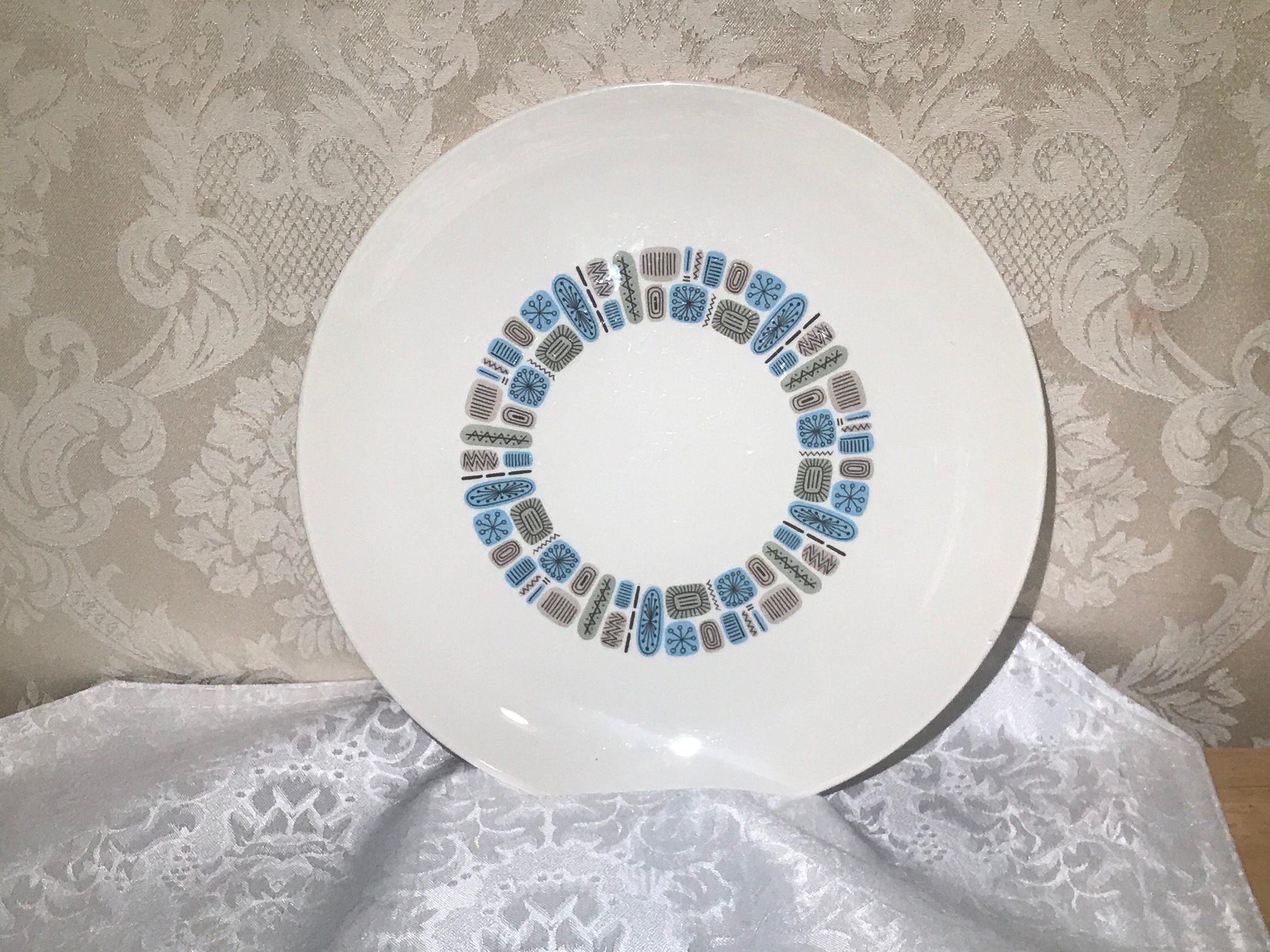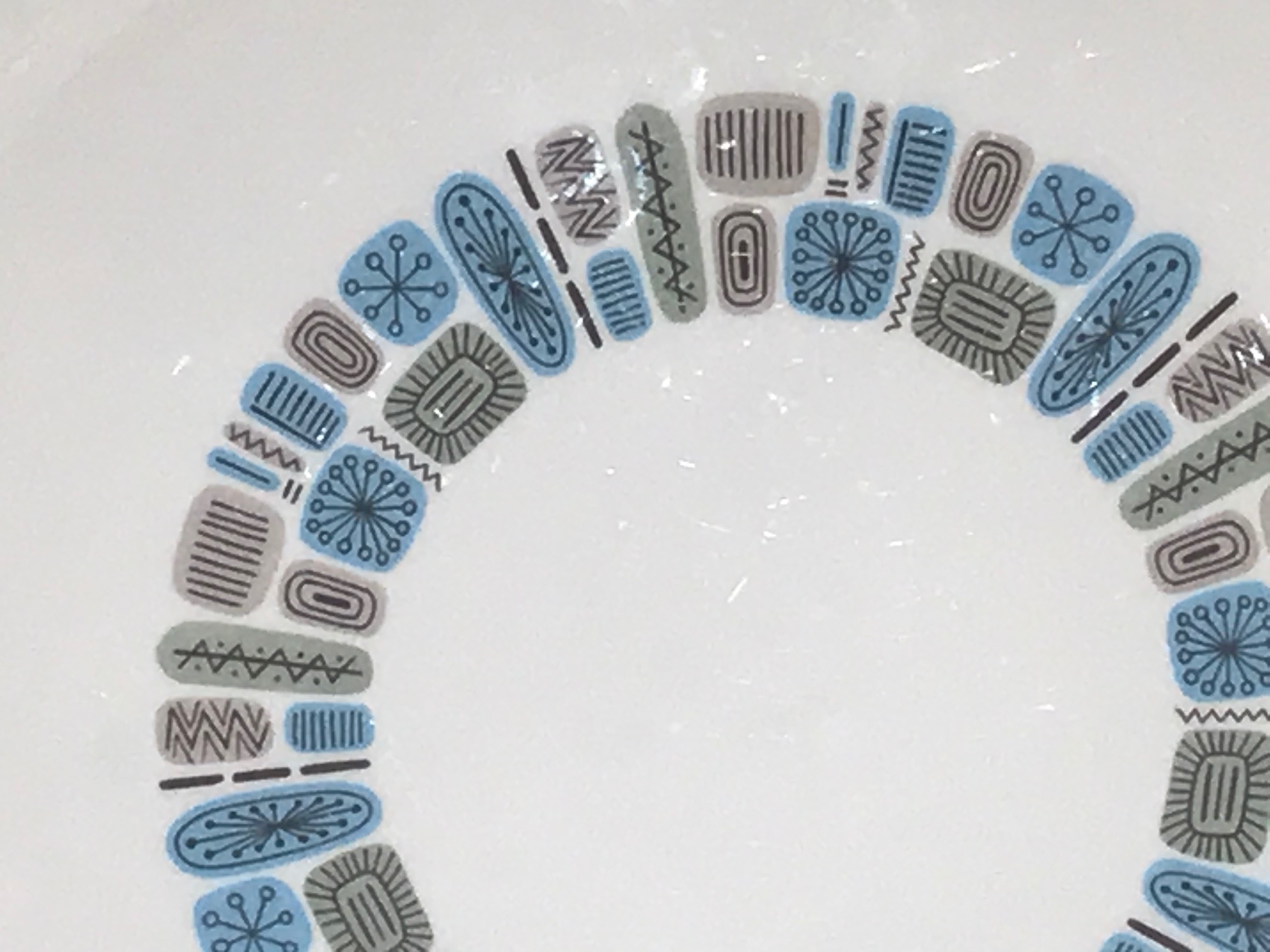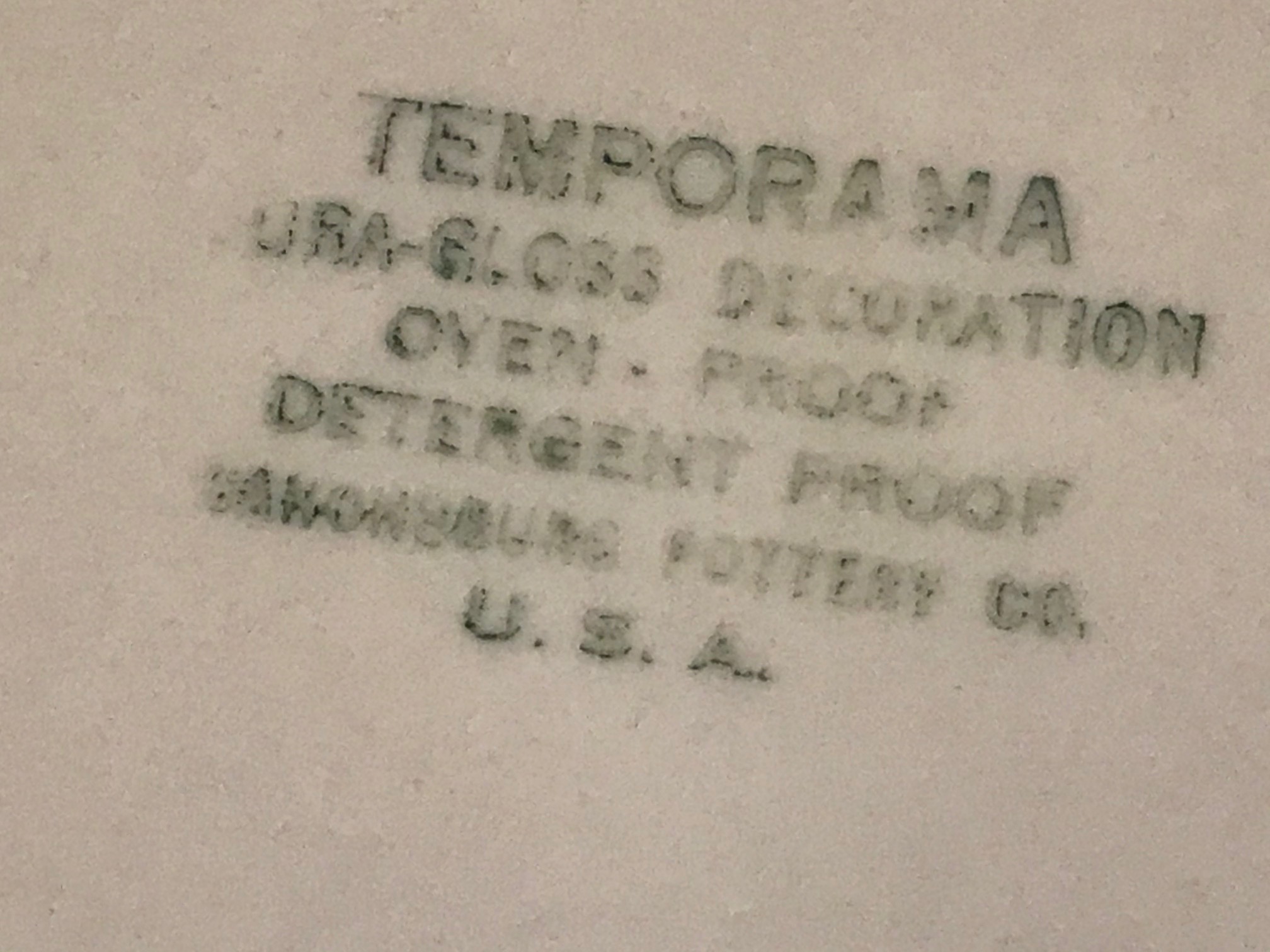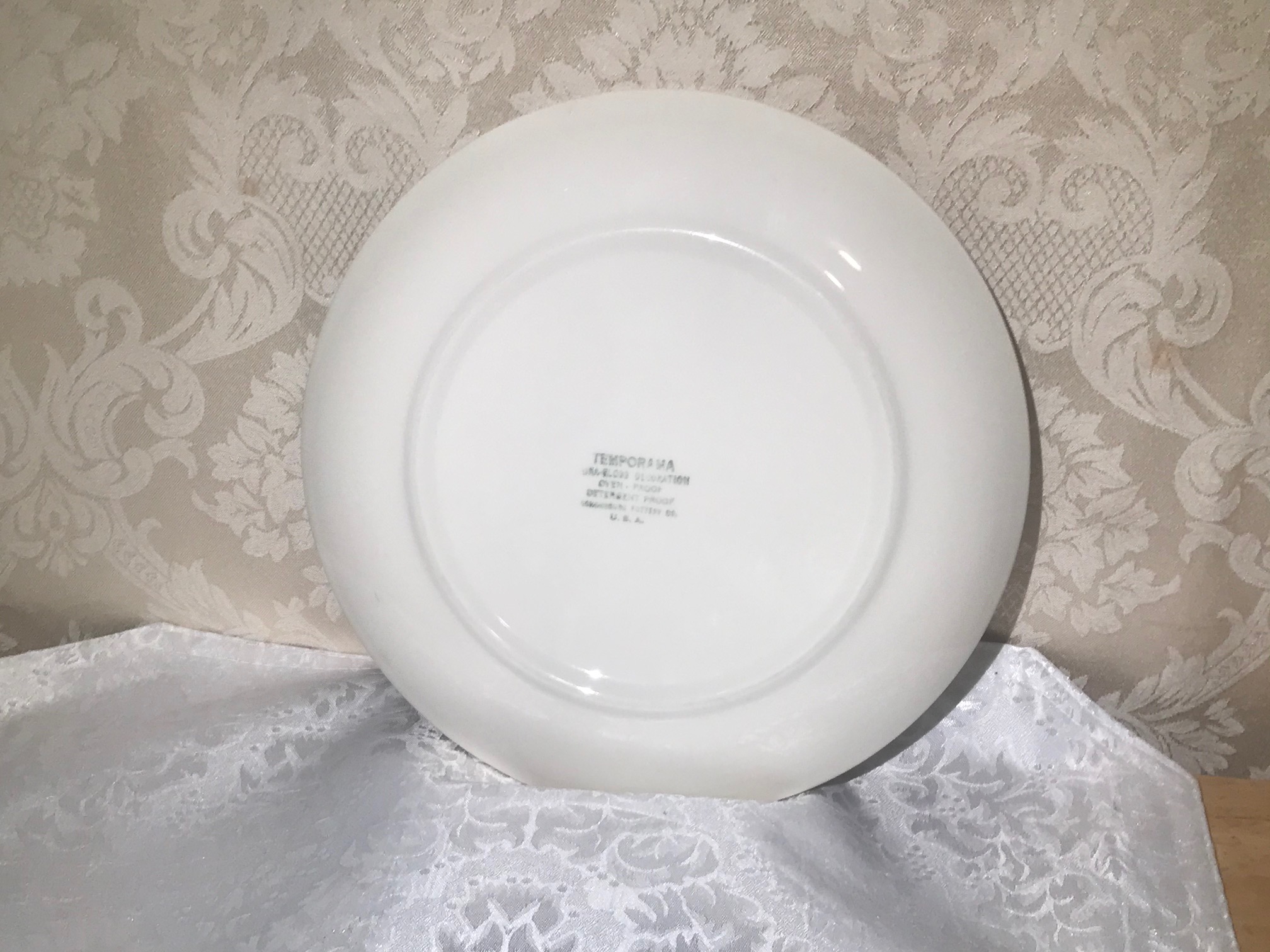Vintage Temporama dinner plate: 81,600 ppm Lead. For context: 90 ppm and up is unsafe in items intended for use by kids.

 When tested with an XRF instrument the vintage Temporama (Made in USA) dinner plate pictured here had the following readings:
When tested with an XRF instrument the vintage Temporama (Made in USA) dinner plate pictured here had the following readings:
White glazed ceramic area at center of dish:
- Lead (Pb): 74,300 +/- 2,200 ppm
- Iron (Fe): 517 +/- 177 ppm
- Vanadium (V): 85 +/- 36 ppm
- Titanium (Ti): 169 +/- 55 ppm
- Non-Detect (negative) for: Zinc, Chromium, Mercury, Cadmium, Arsenic, Barium, Chromium, Antimony, Selenium
Decorative pattern area on food surface of dish:
- Lead (Pb): 81,600 +/- 2,700 ppm
- Tin (Sn): 1,819 +/- 117 ppm
- Zinc (Zn): 1,393 +/- 106 ppm
- Copper (Cu): 264 +/- 66 ppm
- Iron (Fe): 1,505 +/- 248 ppm
- Titanium (Ti): 177 +/- 56 ppm
- Zirconium (Zr): 3,406 +/- 171 ppm
- Non-Detect (negative) for: Chromium, Mercury, Cadmium, Arsenic, Barium, Antimony, Selenium
Test results are science-based, replicable and accurate. Testing has been done for a minimum of 60 seconds per test with tests repeated multiple times (for each component) to confirm the accuracy of the results. A freshly calibrated XRF instrument that is specifically designed for testing consumer goods is used for all test results reported on this website.
How much Lead is too much Lead?
For context the amount of XRF detectable Lead that is considered unsafe (and illegal) in a newly manufactured item intended for use by children is anything 90 ppm or higher in the paint, glaze or coating. Dishware is not covered by this regulatory standard (for total Lead content as detectable with an XRF instrument) because regulatory agencies do not consider dishware to be “items intended for use by children.” Leach testing standards for dishes are not useful when looking at dishware that has been in use for decades as leach testing is only done at the time of manufacture (on new, unused dishes) and results are not representative of what happens to a dish with decades of regular daily use (use as intended – which may include use with hot and acidic food: salad dressing, pasta with sauce, lemon juice, etc.)
Some additional reading….
- To see more vintage china that I have tested, click here.
- To read more about the concern for Lead in vintage pottery and dishes, click here.
- To read more about the type of testing I do, click here.
As always, please let me know if you have any questions.
Thank you for reading and for sharing my posts.
Tamara Rubin
#LeadSafeMama

Never Miss an Important Article Again!
Join our Email List




I’m so glad I found this on this site! We’ve been eating off these dishes for years. :'(
Do you have any readings for the small blue plates in this set??